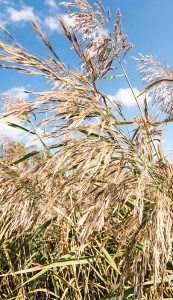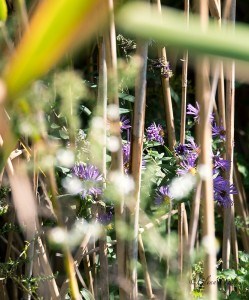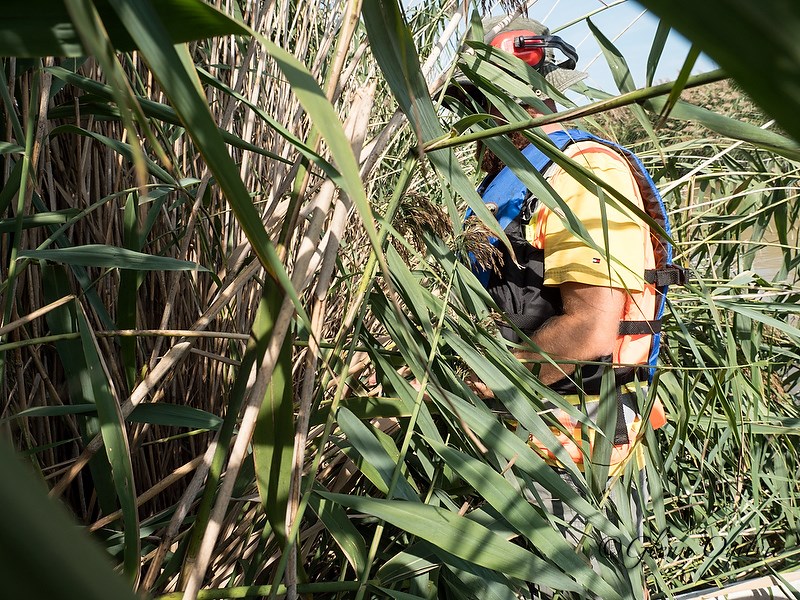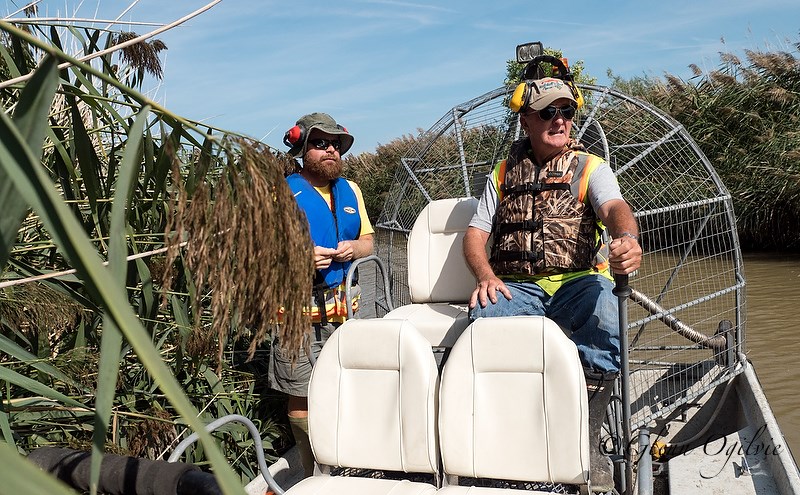Glenn Ogilvie
The war against phragmites has opened on another, larger front in Sarnia.
City drainage superintendent Dave Moores had a close-up look at the damage done by Canada's worst invasive species in the Telfer Diversion Drain last week, while riding in a specially designed watercraft with veteran pesticide applicator and habitat restoration specialist Frank Letourneau.
The long, straight diversion channel between Lakeshore Road and Highway 402, dug to drain the area when the highway was built, has become choked with “phrag.”

While the city has been spraying phragmites the past three years, the drainage canal is a first-year pilot project.
A solution of “Vision Max” herbicide and soya oil mixed with water is sprayed on the upper green foliage, which is left to die. The chemical also makes its way to the root system.
“When the phrag turns golden you know it’s dead,” said Letourneau, a Chatham resident.
Typically the invasive reed is sprayed year one and needs a second application the following year.
While viewing the massive colony in Sarnia, Letourneau, who has been in the spraying business for 30 years, said, "It's the worst I've ever seen a drainage ditch.”
In some places, Letourneau estimated the phragmites to be 16 feet high and at a “critical” stage.

The reed is a native of Eurasia. It spreads through wetlands, roadways and shorelines, choking off the flow of water and eliminating wildlife and native plants that can’t survive in the thick, impenetrable mass of stalks and poisonous roots.
It also a killing field for turtles, which become trapped on their side between the reeds and die, he said.
“Nothing lives there except mosquitos and ticks. All you find are skeletal remains and a lot of dead birds. Once I even found a dead deer.”
As phragmites continues to spread along roads and shorelines, Lambton County asked staff last week for a report that could see it become the first in Ontario to tackle the problem on a countywide basis.

